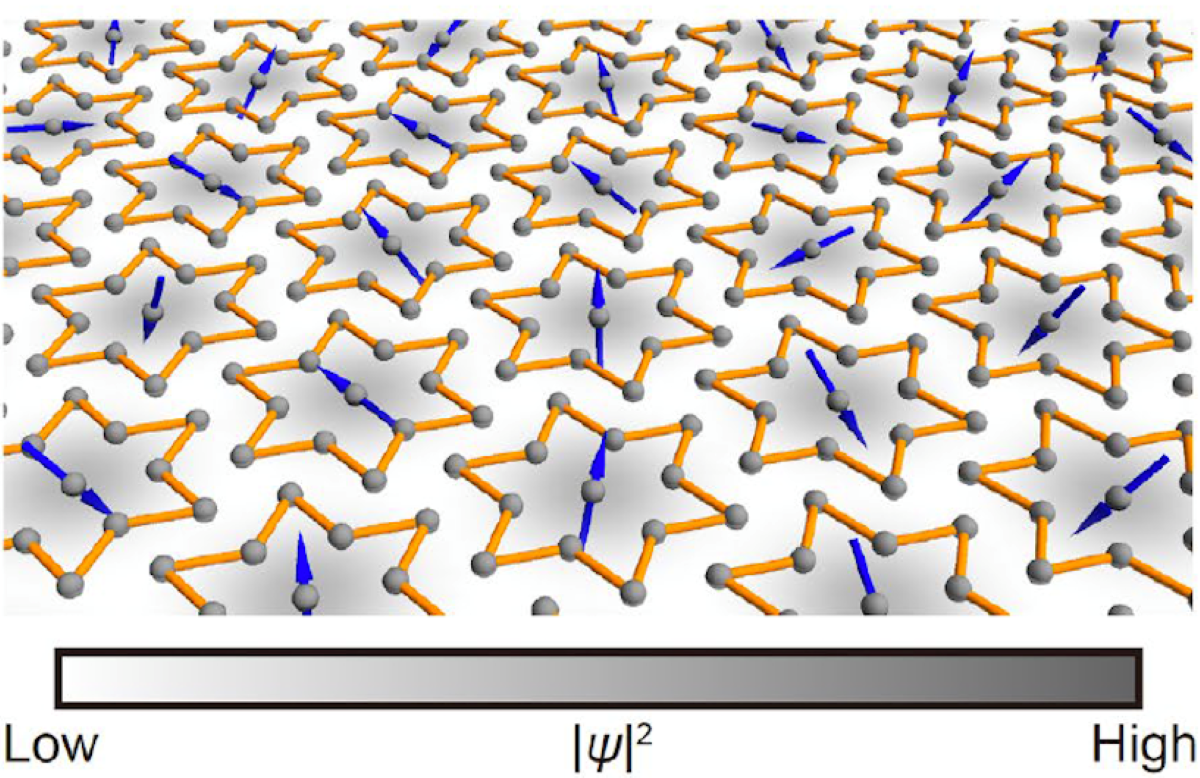In a strange state of matter, the electrons split into quantum quasiparticles, one still immobile, and the other going through an “out of body experience” while bouncing like a phantom from a crystal. There are pictures.
Scientists at Lawrence Berkeley National Laboratory (Berkeley Laboratory) in the US have imaged a quantum particle in a completely unexpected kind of “out-of-body state”, bouncing like a ghost through crystalline matter.
It is the first time that scientists have been able to take direct pictures of how electrons break down into spin-like particles called spinons, and into electrically charge-like particles called holons, after being introduced into a new state of matter known as quantum fluid. Spin (QSL).
This strange state of QSL matter resembles a kind of “liquid” characterized, among other things, by the frenzy of quantum entanglement.
Quantum particles have two inherent and inseparable properties: their spin, which reflects their angular momentum (spin state), and their electric charge. Both can be changed in a QSL environment.
To understand the significance of this discovery, we must go back to 2006, when researchers at Stanford University experimentally verified a theory that had been waiting for verification for 40 years.
Related topic: They show the existence of a new quantum state of matter
historical photos
Working at the US Department of Energy’s Lawrence Berkeley National Laboratory’s Advanced Light Source (ALS), the same person that obtained the historical photos, the scientists were then able to verify that the collective excitation of the electron system could lead to the emergence of Two new quasiparticles They are called “spinon” and “holon”.
In this case, spin carries information about the electron’s spin and holon carries information about its charge, and they do so as separate, independent entities.
It is a paradoxical thing, because it transferred the phenomenon to the ordinary world, as if the wheels of the car were directed to the right and the car to the left, they explain researchers.
Until then, the existence or behavior of spinons and halons had not been confirmed. Fifteen years later, the first photographic certification of this unique process was obtained.
real picture
Other studies have observed different effects of this phenomenon, but we now have real pictures of the condition in which the vertigo lives. This is something new,” explains the lead of the new study, Mike Cromey, at release.
Another researcher, Sung-Kwan Mo, adds, “Spinons are like ghost particles. They’re like the big foot of quantum physics: people say they’ve seen them, but it’s hard to prove they exist. With our method, we’ve provided some of the best evidence to date.”
In QSL, the spins move freely to carry heat and spin, but without an electric charge. To discover them, most researchers previously relied on techniques looking for their thermal signatures.
Now, as reported in Nature Physics, Crommie, Mo and their research teams have shown how to characterize spins in QSLs using direct images of how they are distributed in the material.
Unusual division
What they can see in the image obtained is that when injected into the QSL, the electron splits into two different particles, the spinons and the halons.
Images obtained from the “spin charge separation” of electrons, which occurred in monolayer samples of an amorphous solid only three atoms thick, first show that the halons freeze in position.
They form what scientists call a charge-density wave: they are shaped like the Star of David (six-pointed, consisting of two triangles that intersect in six places).

Out of body experience
However, the image also shows that the spins undergo an “out of body experience” as they separate from the halons frozen in position, and move freely through the material.
This is unusual because, in conventional matter, electrons carry both spin and charge as they move. These two characteristics, Crommie says, “don’t usually break down in this fun way.”
He adds, “Part of the beauty of this topic is that all the complex interactions within the QSL somehow combine to form a single ghost particle, which simply bounces off the crystal.”
More powerful qubits
Recognizing the significance of their discovery, the researchers believe that QSLs could one day form the basis of powerful quantum bits (qubits) used in quantum computing.
In traditional computing, a bit encodes information as a zero or as a one, but a qubit can contain both a zero and a one at the same time, speeding up certain types of computation.
Understanding how spinons and halons behave in QSLs could support research in next-generation computing, according to the authors of this study.
Another impetus for understanding the inner workings of QSLs is that they have been predicted to be a precursor to exotic superconductivity. The researchers set out to test this prediction in the Advanced Light Source (ALS).
reference
Evidence for quantum spin fluid behavior in a single layer 1T-TaSe2 from scanning tunneling microscopy. Wei Ruan et al. Nature Physics (2021). DOI: https://doi.org/10.1038/s41567-021-01321-0
Superior image: Jr. Corba. unplug.

“Beeraholic. Friend of animals everywhere. Evil web scholar. Zombie maven.”
